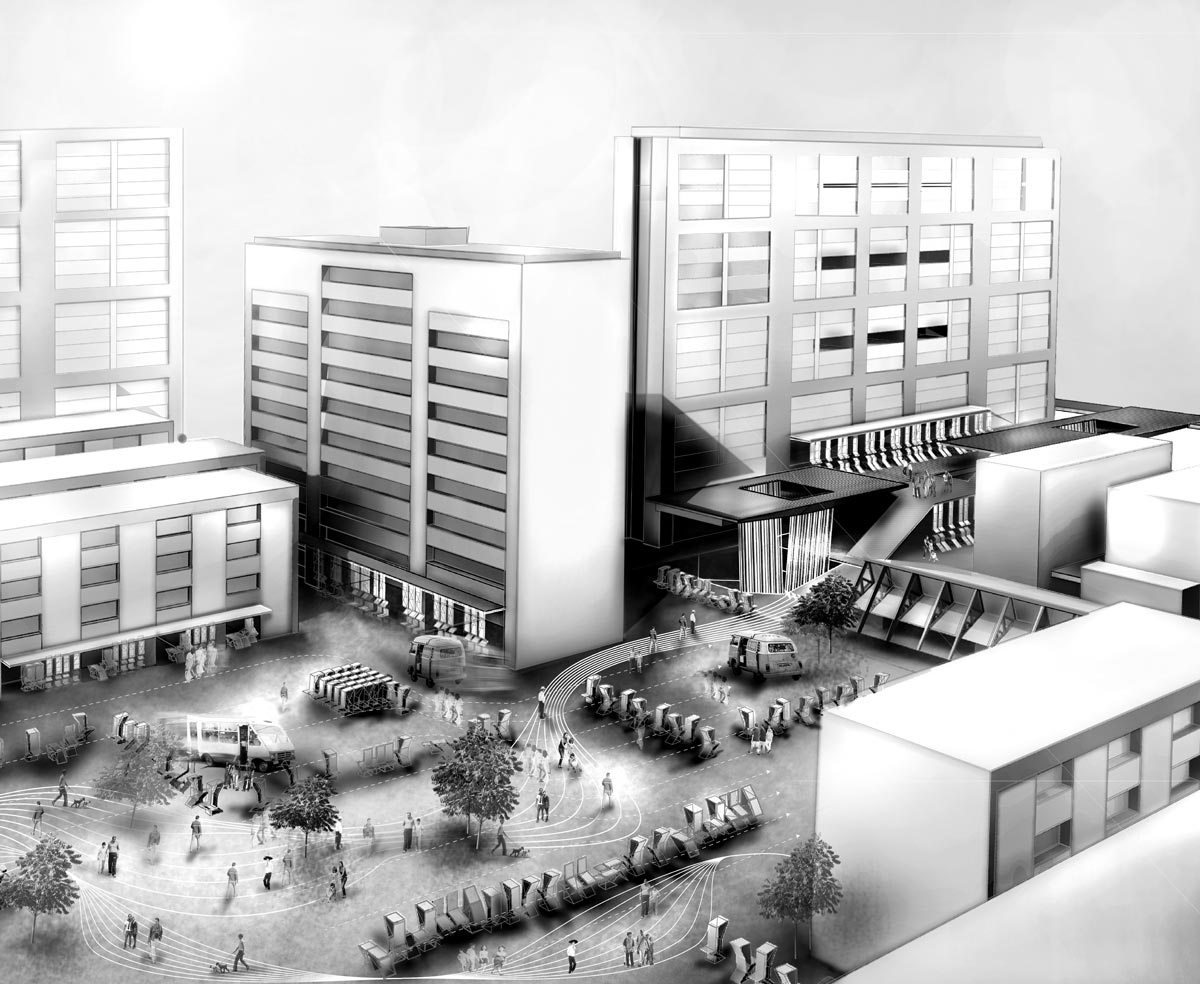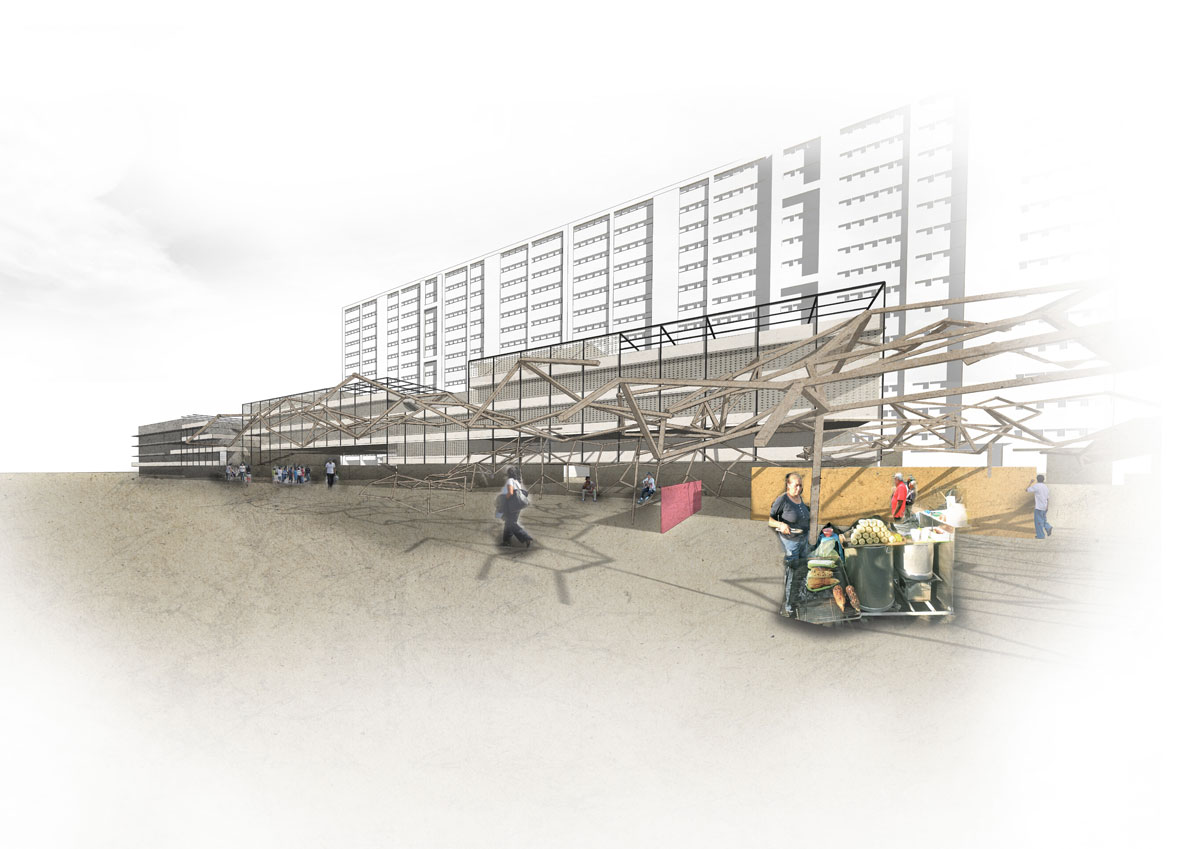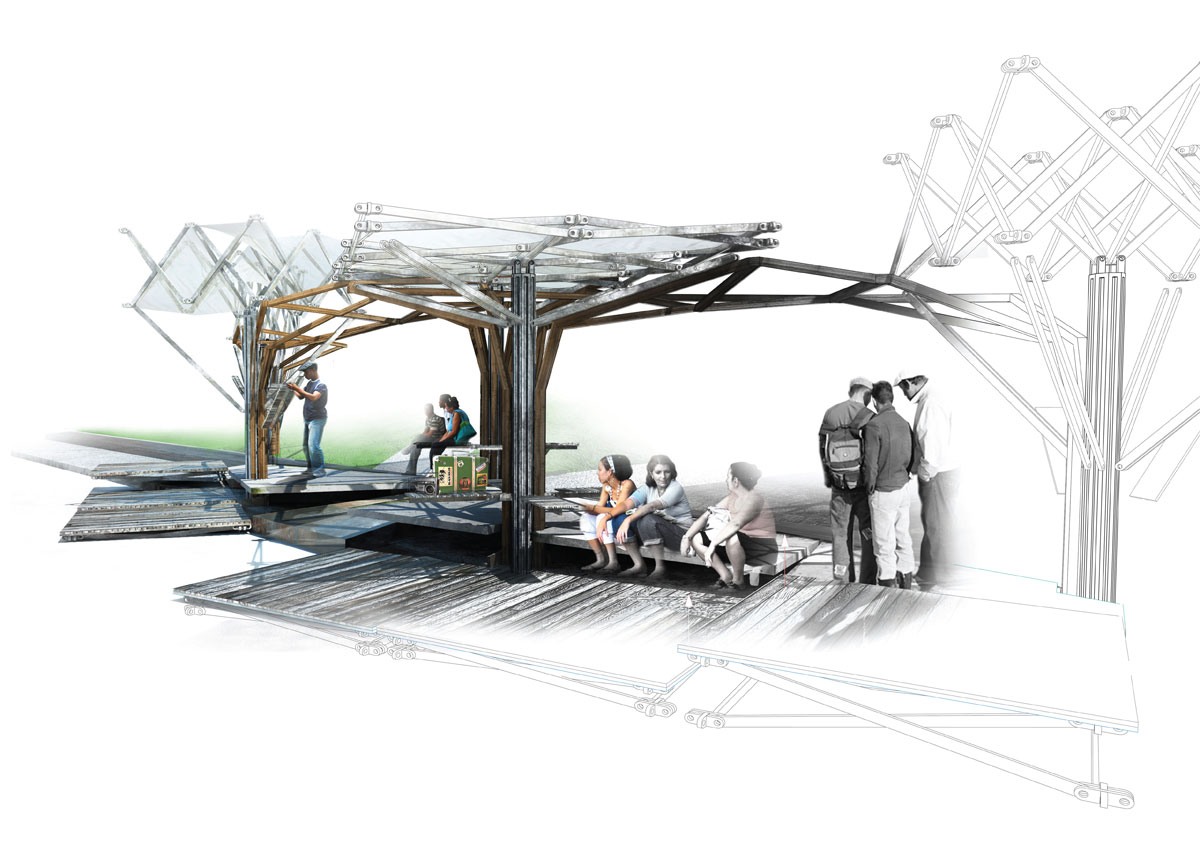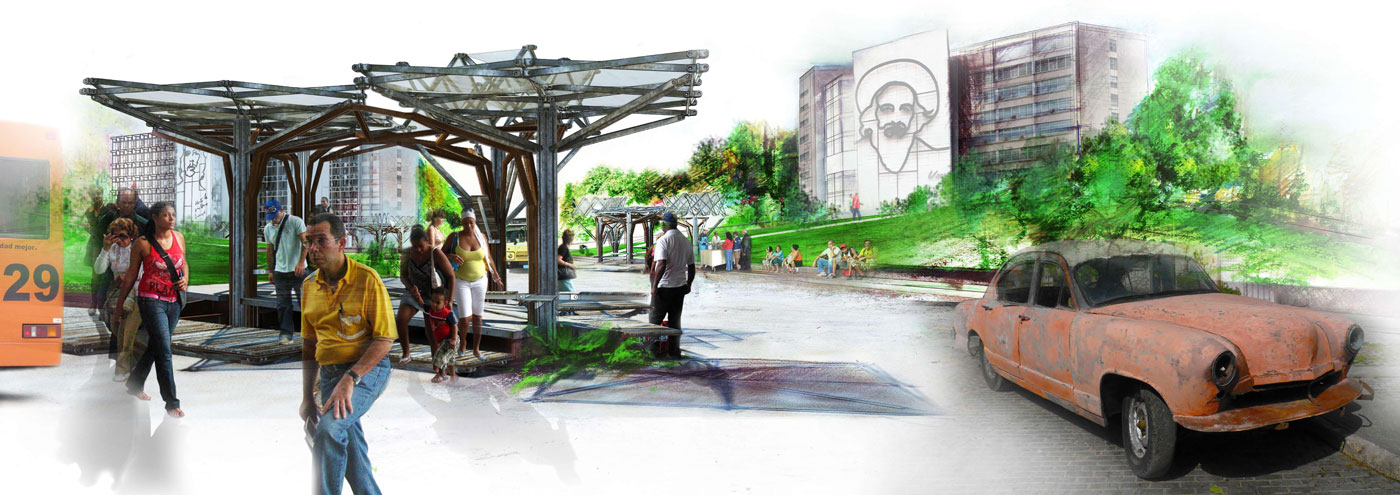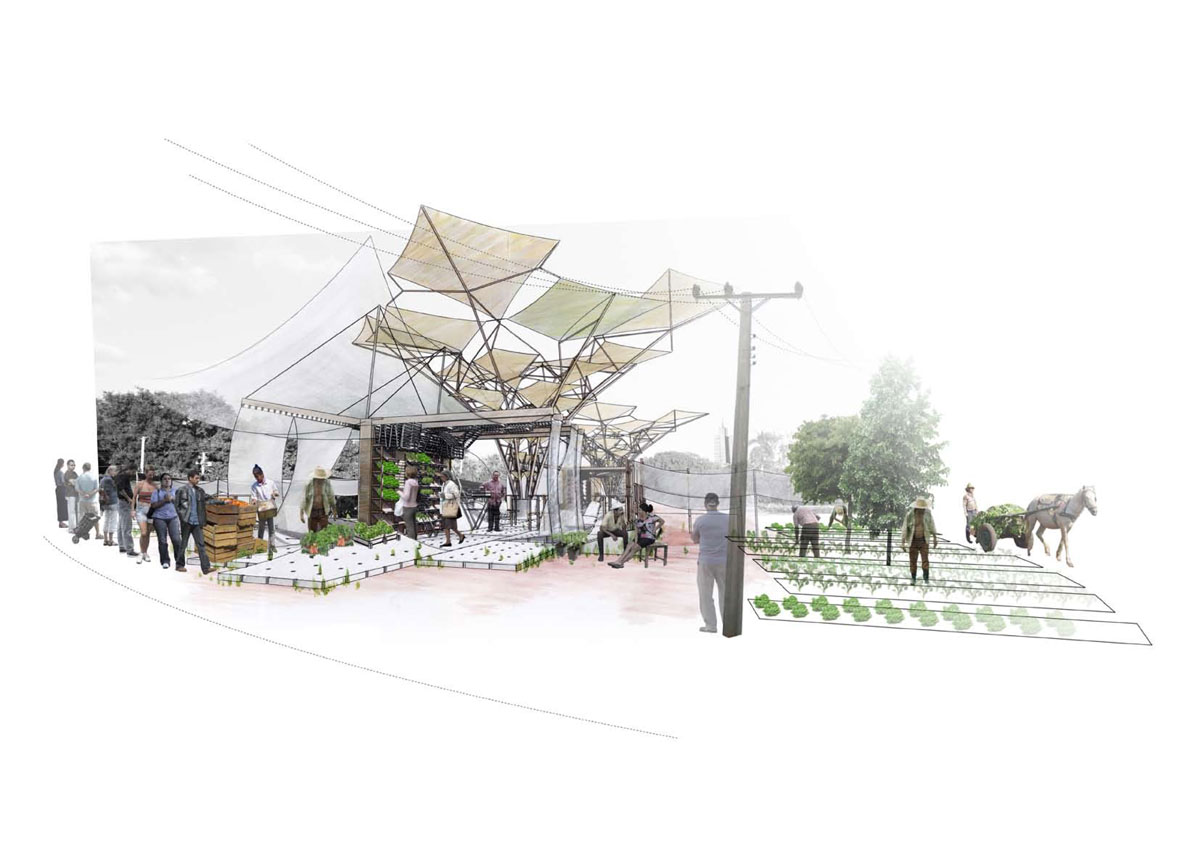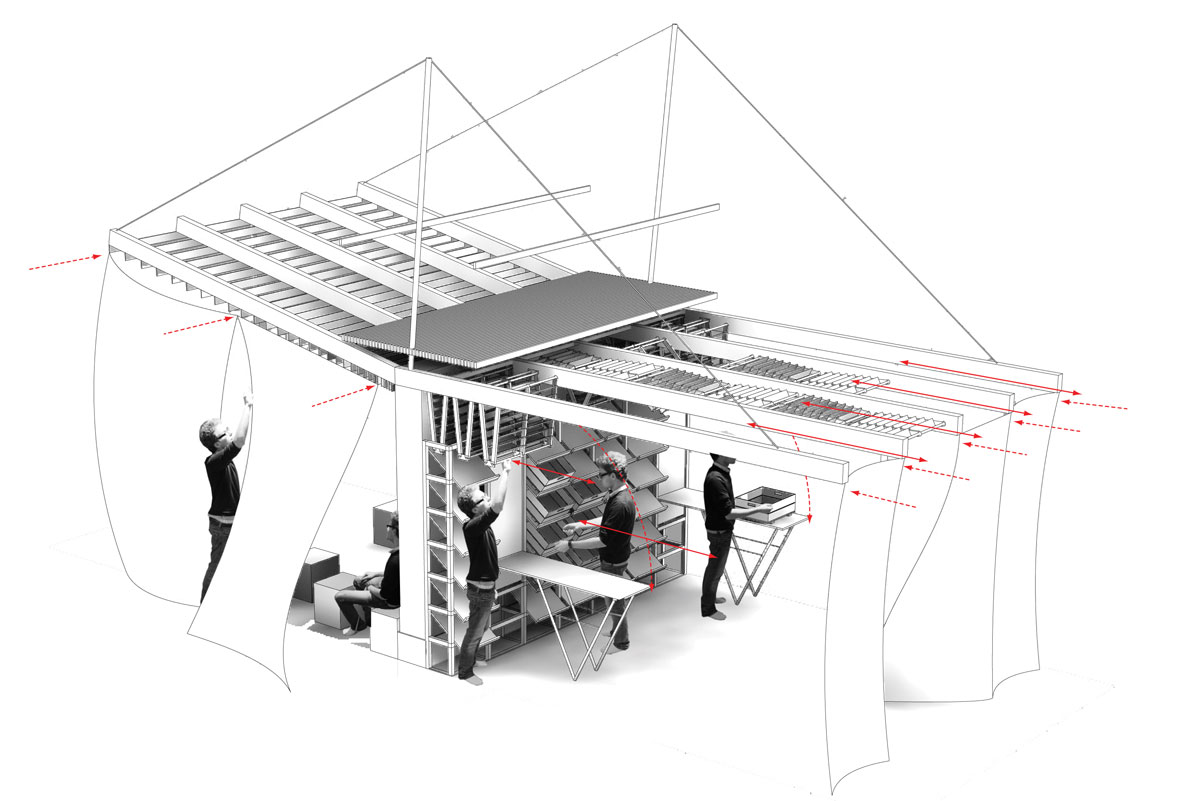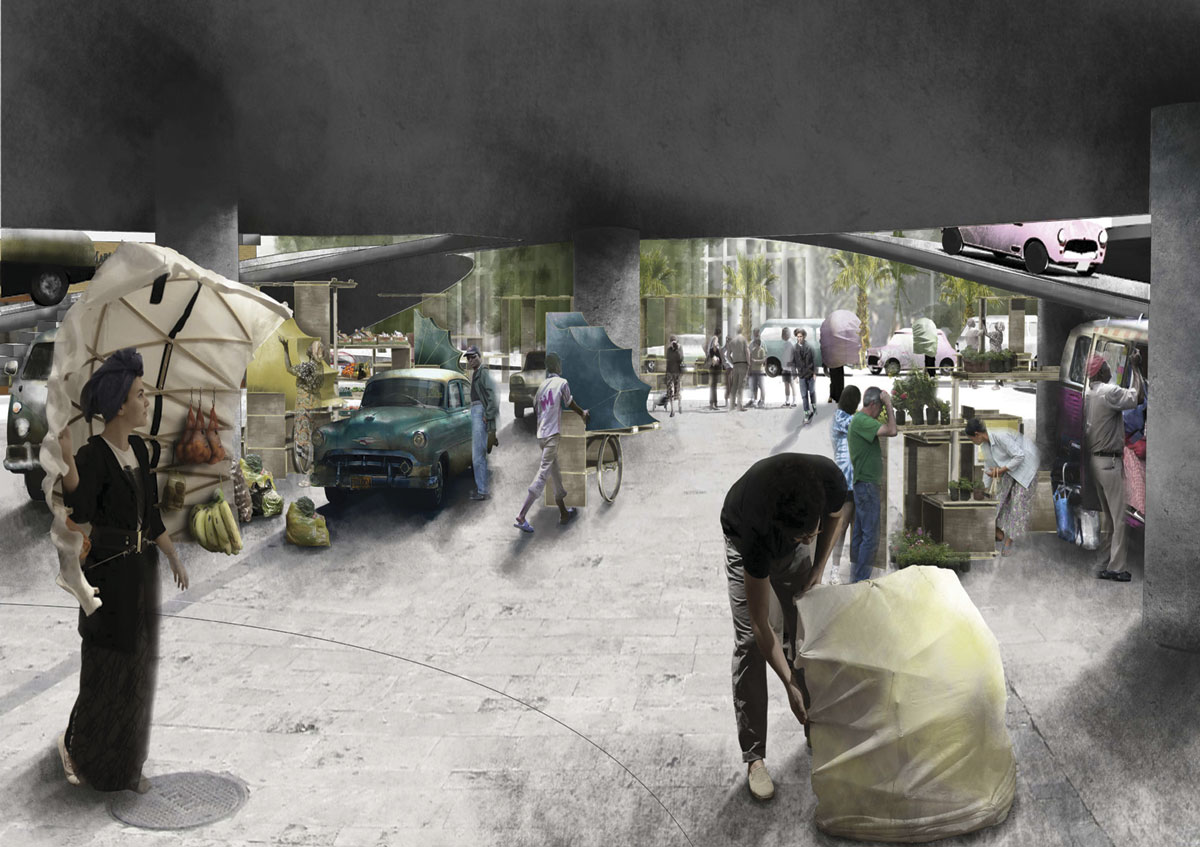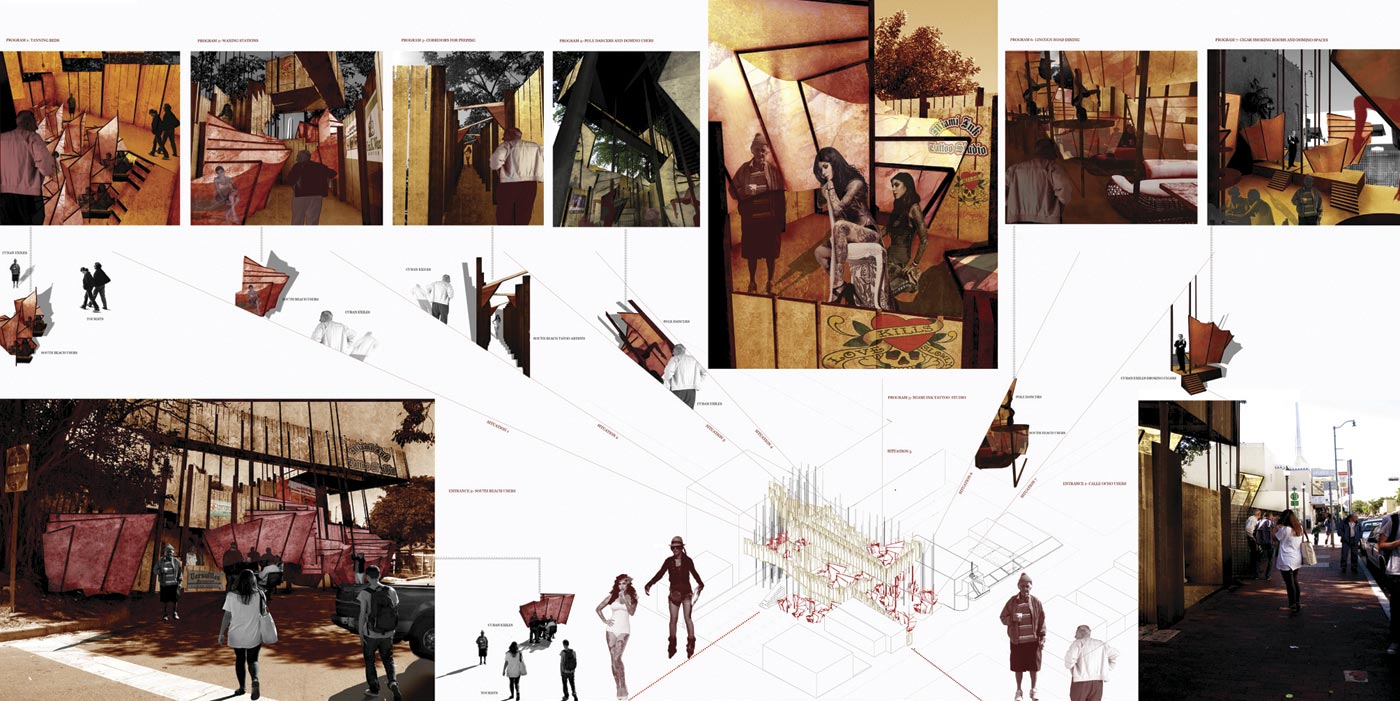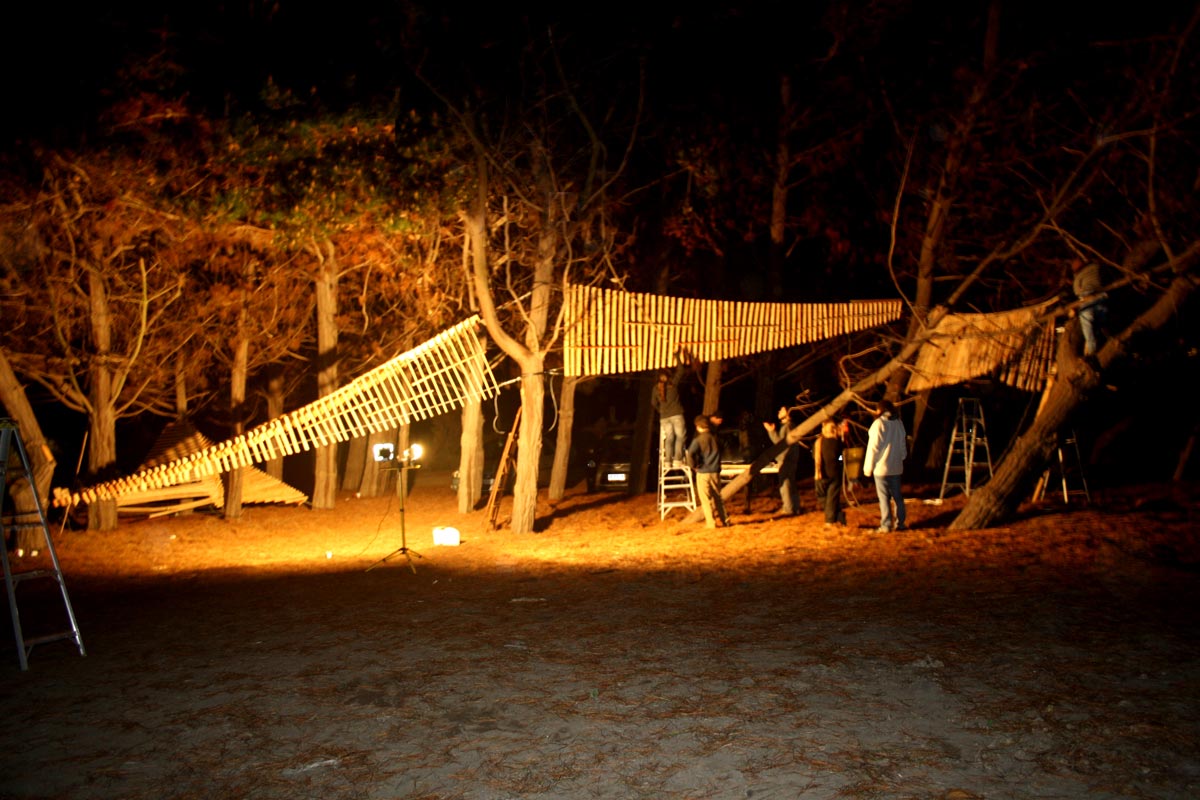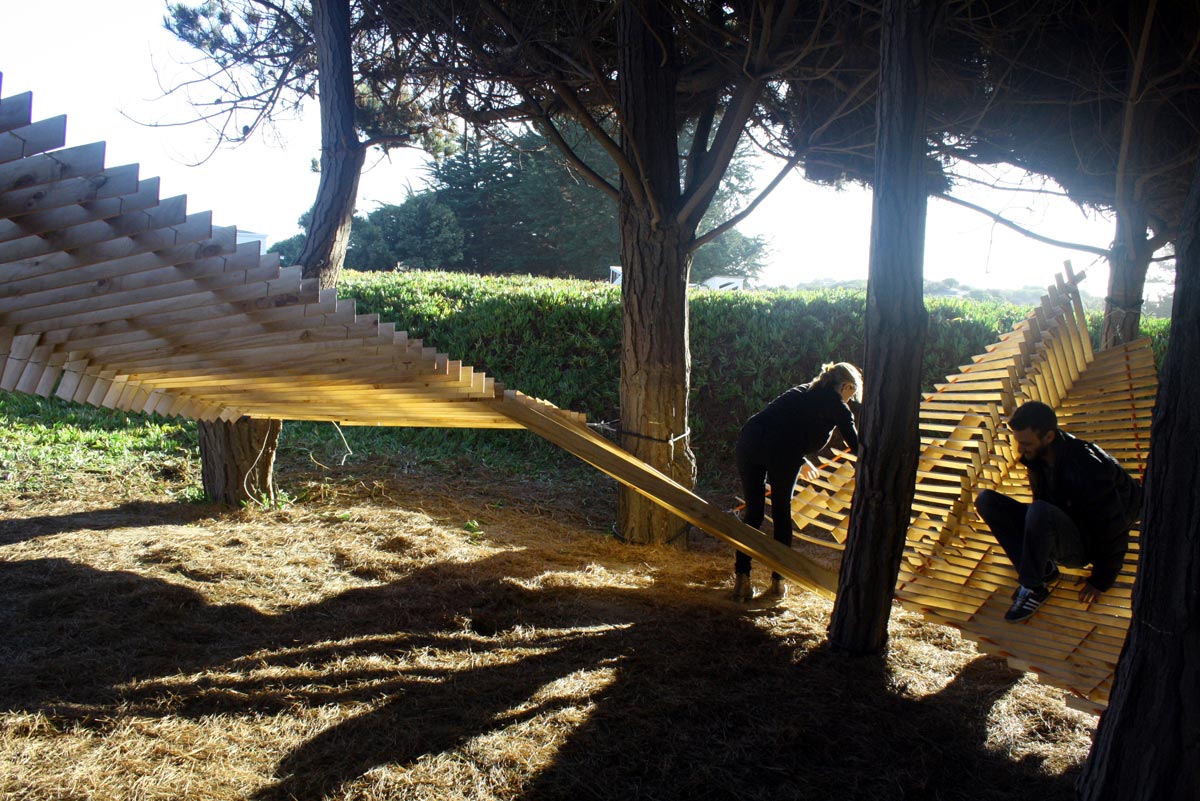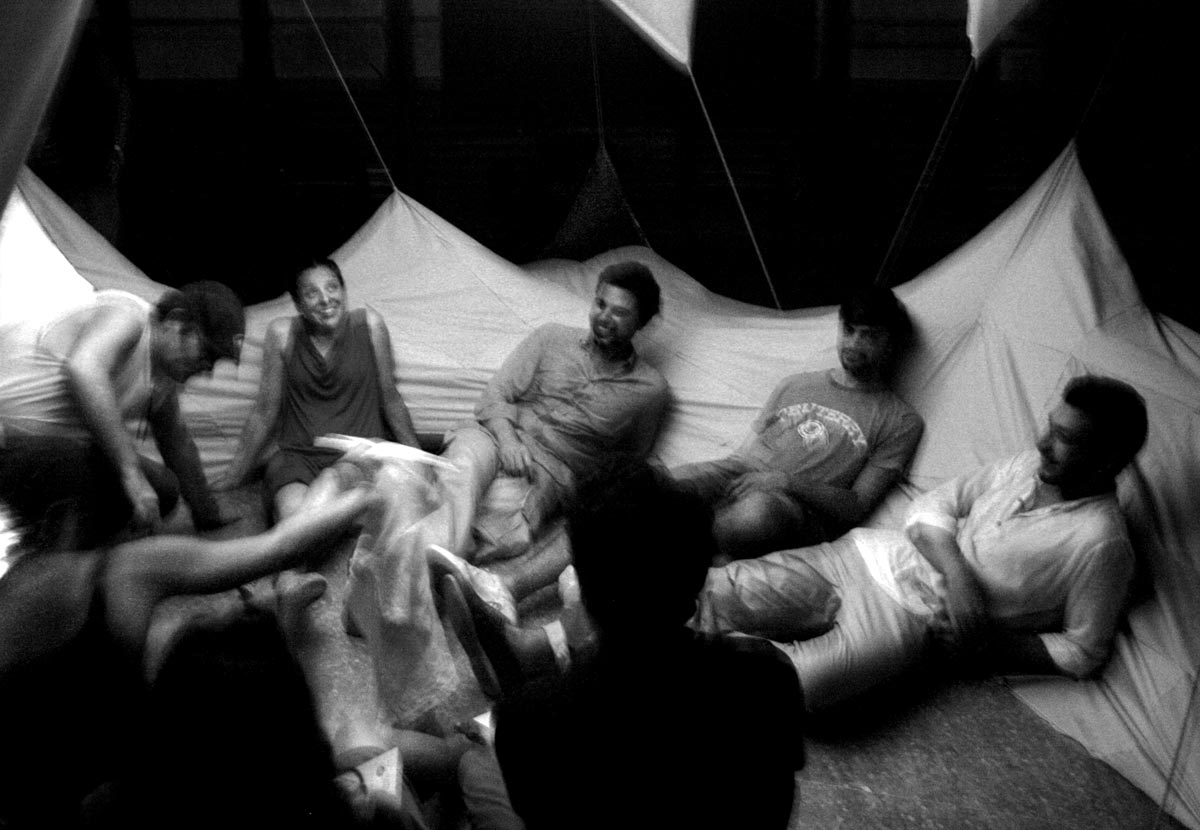Towards a new position for material practices in the public realm.
In recent years, “the political” has taken up a prominent space in architecture theoretical debates, determining interpretive interests and emerging practices’ positions. Widespread dissatisfaction with the relationship between citizens and the city and the contemporary form of exercising politics has been important for the recent boom of politics, at least for younger generations of architects.[1] However, politics and “the political” have been used to define a set of quite diverse practices, including for instance: participation and collectivism; a concern for citizens’ social and everyday problems; new ways of understanding environmentalism as an integrating social, mental and physical reality; the construction of free and plural atmospheres of inhabitation; the disclosure of certain underlying conditions on the use of the city and the built environment; performative practices in public, both in their festive and vindictive dimension; the promotion of urbanity and a concern for providing “the public” and especially “public spaces”; reflections on any kind of urban-based conflicts – whether of a legal, class, gender, ethnic or cultural nature; intellectual efforts to erase disciplines, areas of expertise and existing categories as a form of emancipation or rediscovery of individual and collective freedoms. This list, which is not intended to be comprehensive at all, provides an overview of the different practices and trends often presented as participating in the recent interest in politics and architecture, generating a great deal of confusion. To add to this, overlaps between these different lines are also common, to the point that is very common to find practices that develop two or three of them at a same time.
For us in particular, the relationship with politics involves aspect of autobiography, not only because we belong to the first generation born in Spain after Franco’s death, but also because, since our arrival at the Architectural Association almost 10 years ago, the political has taken on a leading role in all of our investigations. This text can be read as the first attempt to summarize part of this experience, but also as a way to define our own critical approach to politics and architecture. As an account of our own experience, this is also a journey through the various difficulties and misunderstandings we confronted when dealing with politics and architecture – a guided tour of the pitfalls we have faced and the ones that are still to come, as an open ongoing conversation.
Politics of Fabrication | Mexico by Fragkiskos Konstantatos
Politics of Fabrication | Mexico by Hao Wen Lim
“The political”: challenges and misunderstandings
By its very etymology, “the political” has a strong urban affiliation, since, as we know, political comes from polis: the Greek city. Political relates to the city, and yet the polis is commonly mistaken with the city’s physical space or its urban fabric. In his book The City and the Laws, Cornelius Castoriadis, one of the philosophers who made the most effort to understand the principles of democracy, uses Thucydides’ well-known words “ándres gàr polis” to define the polis (“men are the city”). As such, according to Castoriadis, the polis is not the physical space, but the inhabitants or, more precisely, the body of the inhabitants – according to the particular relationship that Greeks had with their bodies. Therefore, the polis is that common body configured by free citizens,[2] to the extent that the physical city could be completely destroyed and the polis would still exist so long as the body of at least one single citizen survived.[3] Within this tradition, politics is understood as thoughts and determinations to be taken regarding this common body, that which concerns us all. However, this apparently simple and compelling definition of what democracy could be involves an inherent difficulty for architects interested in politics. As there is no physical dimension to politics beyond citizens’ own bodies, the architecture itself could never be or be called “political”.[4] The political is connected to certain human actions and not to urban spaces. It could be said that it relates to a “space in-between bodies”, but not to an independent space in itself. This is the first major hurdle that we face as architects interested in politics. If we look at its theoretical basis, architecture cannot be political by itself since, by definition, “the political” has to do with people and their actions rather than buildings.
Invoked in this way, the classical tradition provides a second common misconception associated with the places where political activity takes place. The Greek agora is recurrently mentioned as the political space par excellence, the place where “the political” is unfolded. However, this is not entirely true. In a brief and revealing work by Richard Sennett titled The Spaces of Democracy,[5] the author comments on this by clarifying some misleading literal translations of Hannah Arendt’s reflections on the public sphere. According to Sennett, in ancient Greece the public space for the political activity per se was not the agora but the pnyx. The latter was a large stone platform with carved steps leading to the rostrum of speakers (bema) and where the polis constituent assembly gathered together (ekklesia).[6]
Politics of Fabrication | La Havana by Gary Dupont
Politics of Fabrication | La Habana by Max Hacke
Therefore, the pnyx was the place where the common issues were discussed and it was the centre of political life. Meanwhile the agora was the place for social life and small private interpersonal affairs and business, which, depending the need for discretion could seek refuge in the estoas. In the agora, which was also crossed by main roads, love affairs were settled, businesses were closed and the market was installed. Thereby, the agora was constituted as a somewhat undisciplined and open space, as we like to see the ideal public space today. Yet, despite this attractive nature, the agora was more of a social space than a political space. In contrast to the indiscipline of the agora, the pnyx – the space where political activity was actually exercised – was a highly disciplined space. In the pnyx, each person had his place and an order to ensure equal right to word (isēgoría). Its appearance, unlike the wild appeal of the agora, was similar to modern parliaments, which points out the requirement of discipline in the political to ensure equal treatment.
Sennett’s acute remarks do not imply that the agora is not significant in the political sphere. According to the author, even though the agora is not the space for the political, it is the space where the consequences of the political become visible.[7] It is in the agora where the plurality life is displayed, to which the political refers. Consequently, if the pnyx has the role of articulating the political, the agora has the fundamental role of making apparent what life in democracy is, and how it becomes visible in the city. Sennett’s differentiation between the roles of the pnyx and the agora may seem like an academic subtlety with no further implications. However, it has deep consequences for the way in which we talk about politics and space today. Hence, a misunderstanding between “action” and “consequence” has fueled the idea that actions and performances in the squares of cities are to be understood as political action in itself, rather than its visible consequences. According to anthropologist Manuel Delgado, this has led to a common belief that “the cultural project of modernity in its political dimension does not understand democracy as a form of government, but rather as a way of living and as an ethical association”.[8] This takes for granted the underlying urban-based power relations which are really at stake. As Richard Sennett points out, the action in urban public spaces helps to understand what democracy is, but it does not exercise it nor even necessarily favours it.[9] In fact, aren’t there cities with an incredibly rich public urban life existing under quite undemocratic regimes? Luis Goytisolo, for instance, gave beautiful descriptions of Jemaa el-Fna square in Marrakech, highlighting the overwhelming richness of people’s actions in this great public space, even though they happen within what is still a quite undemocratic society, which is never questioned or challenged.[10]
Therefore, as assumed by Sennett, it is difficult to prove that actions in public lead to more democracy. This is even more questionable when this action in public is institutionalized and channelled through “civic standards” – as cities are trying enforce today – involving patterns of exclusion towards certain “anti-social” attitudes. Then, civility becomes an instrument that reproduces or lubricates the existing status quo.[11] It is also through this kind of civic normative power that expulsion and precariousness can be legitimated today, while being happily covered under a smooth cloak of civility.
A third difficulty comes from the reading of Hannah Arendt, who remains today as the author who made the most effort to clarify what “politics” is, which makes her work a must-read for anyone interested in this topic.[12] Also following the example of Athenian democracy, for Arendt, in order to understand the specificity of “the political” it is necessary to first make an accurate differentiation between spheres and types of human activities. In her classic work The Human Condition, Arendt separates three types of activities: labour, work and action. The first, the “labour” (typical of the animal laborans) is an activity closely linked to the body’s biological processes: those repetitive tasks that have to do with our own subsistence (food, shelter, sex). Because of their circular and reproductive nature, these activities never lead to an end (beyond subsistence itself).[13] The “work” (typical of the homo faber) is a productive activity, distinctive of human ingenuity, and which leads to a particular end, to an artificial and durable exterior result. The work is measured in means and ends.[14] These two activities, “the labour of our body” and “the work of our hands”, are both within the human private sphere, and through them humans become consumers and producers.[15] The third activity that Arendt indicates is “action”, an activity that occurs among men without any mediation. “Action” is a discursive transforming activity that has a beginning, but whose end is undetermined. It makes possible the plurality of forms of human life through the manifestation of our own uniqueness or, according to Arendt’s own words, “living as a distinct and unique being among equals”.[16] For Arendt, “action” is the proper political activity taking place in the public sphere: unmediated, visible and in the presence of others.
Having defined “action” as the human political activity, Arendt outlines its purpose as caring for what is common from a plurality that cannot be reduced to antagonism (i.e., a dual opposition of positions, typically friend and enemy). Arendt’s position, who proposes to rescue a true democracy, works with an agonist model that recognizes the plural opposition between different ways of understanding this care for the commons, not reducing it to antagonism or consensus. For Arendt, difference and plurality lie at the very base of what politics is, so that politics is a conflict between multiple parts that it has to be kept alive.
Finally, having defined what political activity is and what its purpose is, for Arendt it is fundamental to separate the interests of the domestic sphere (the oikos) from those of the public sphere (where the political takes place), as the former (the private economy) should not interfere in the latter (taking care of the commons). This separation between the political, as the positions towards the commons deployed in public, and the oikonomia (from oikos), as the management of the private sphere of the household and the private interest, is for Arendt a necessary precondition.[17] According to Arendt, if this separation is not possible, the political ends up being absorbed by the management of private interests (be it the interest of big corporations or small individual interests), compromising the exercise of democracy, which is precisely based on the free positioning of each individual towards the commons. The separation between politics and oikonomia, is also for Arendt a separation of the political from the social – an emerging category in modern times, tied in with material organization and needs at a state level. For Arendt, the realm of the social is also a threat to the autonomy of the political, as it substitutes political action by a governance related to the management of material needs.[18] In short, the evil of modern politics for Arendt is to have been transformed into management, and this notion of management comes from an extension of the managerial sphere of the oikos to the public sphere, to the extent that oikonomia (economy today) has replaced politics.
Sixty years later, Arendt’s reflection on how politics has become purely economic management is more relevant than ever. The city is now experiencing an increasingly post-political condition, sustained by an administrative technocracy and regulated through specific economic agreements between private operators and public authorities.[19] However, the birth of this new condition that Giorgio Agamben has termed as the “managerial paradigm” is not new, and its fundamental basis can be found in the city itself, specifically in the modern urbanization process.[20] For authors such as David Harvey, urban transformation and extensive real estate development experienced by European cities beginning from the late nineteenth century were urban phenomena that propelled the beginning of this change: a substitution of politics by the managerial in the service of the economy. As a result of this substitution, the urbanization process becomes the method by which the city itself not only becomes an apparatus of capitalist production, lubricating the circulation of production and reproduction of goods and services (hence the emphasis on the city as infrastructure from the nineteenth century on), but also the main safeguard of the capitalist system as a guarantor of the reinvestment of surplus capital for its continuous circulation.[21]
However, while Arendt’s ideas are clairvoyant for the present moment, it is difficult to see what their instrumental application might look like. Is a political reflection that takes for granted the existing social interests credible – and truly operational? In fact, it is difficult to believe that such a separation line between the social and the political can be traced, leaving the political isolated in a perfect bubble that only involves the public sphere. In a way, this split also dismantles valuable lines of action around the political, involving the risk of causing an intellectual/discursive insulation that neutralizes its possible criticality. Among these lines of action is the potential for the social and political to act together in what is now affecting individual situations made collective, such as a new economy of housing in cities where we have witnessed an exponential growth in levels of gentrification and urban expulsion. In addition, the inclusion of the social also offers the possibility of engendering politics from one’s own lived experiences. This type of politics is born from our personal ordinary life, which is the reality we more faithfully trust and defend, as it is only from our own experiences that we can position ourselves within the plurality of forms of life.
The problems derived from this split between polis and oikos were not alien to the Greeks themselves. During the political crisis in the city-state of Athens during the Peloponnesian Wars, Aristophanes wrote two provocative comedies that reflect this concern. What is common to both of them is that women – reduced to the private sphere of the oikos in the Greek world – took full control of the polis.[22] Beyond justified gender justice absent in classical Greece, the taking over of the city by women meant a drastic change in the conception of the polis: the oikos, the domestic apparatus dedicated to the defense of the individual, its food and clothing, its reproduction and care, and where the daily lives of women, slaves and children were focused, took over the centre of the polis. In one of the passages in Lysistrata, for instance, one of the aforementioned comedies, the polis is seen by the protagonist as an extended oikos. But can we think about the city from the standpoint of these material aspects: food, clothing, sex? Imagine the city like in Lysistrata, as “fleeces of wool (…) joining them all and making one big bobbin. And from this weave a fine new cloak for the people”.[23] With this material and lived experience, we can build a discourse on how to position forms of life in the assembly of the commons. However what it is at stake here is also something much more elemental. Castoriadis notes that, in the Greek political understanding, free man’s equal political discourse was based on the fact that his own subsistence was guaranteed, this is, his own oikos was guaranteed.[24] This would act as a kind of precondition for the political to take place, because otherwise the citizen would not be free, but a victim of his own needs.[25]
This approach not only existed in ancient Greece, but has reappeared in other more recent historical moments. It is known, for example, that in the assembly of the Paris Commune of 1870 the first two decisions made were related to the work in bakeries and the rental income; this is, to two urban-based social problems which have in common that they are related to the basic subsistence of citizens and their families.[26] In precariousness, there is no freedom to participate and, compromised by needs, one is only able to reproduce one’s own precariousness. Moreover, this social precondition of politics appears as a guarantor of reliability. Although one may be suspicious about those who speak in the name of the common good, those who fight for their own freedom and dignity are always reliable in their claims.
Politics of Fabrication | Miami by Lara Yegenoglu
Politics of Fabrication | Miami by Vidhya Pushpanathan
Towards a new position for material practices in the public realm
Politics of Fabrication (PLF), was an initiative promoted from within the Architectural Association, whose aim was to share the recent research on digital fabrication to bring it into the everyday life spaces of common use.[27] It was an experience through which the aforementioned pitfalls were confronted, making it necessary to reposition many of the issues that are often associated with this type of material practices in public space. On the one hand, it understands that material installations in public are not in themselves “political”, because politics is people’s position on the commons according to their own form of life. This position on the commons can manifest itself or become more easily visible in public through construction, although, as Sennett points out, it is more a display of the consequences of democracy than democratic political action in itself. The status of the construction is not to contribute to the political agency of people – an aspiration too high for its real instrumental value – but to articulate this visibility of the plurality of different forms of life in public.
It should be noted that this function of giving visibility to the plurality may be ineffective if a link with the action of political power does not take place – something that often happens. Failure to assume these limits leads to the belief that actions in public related to these material practices are considered a political end in themselves, as it is believed by citizenist or urbanity theories today.[28] As Manuel Delgado reflects, “the performative fixation, if not artistic or festive, of the public action dramatizes a type of illusion by which democracy seems to be exercised”,[29] while we are not able prove that this is really occurring. Delgado adds that “the notion of public space, as the physical realization where the citizenist illusion is dramatized, functions as a mechanism through which the contradictions that hold the ruling class do not appear as obvious”.[30] Therefore, we should not forget that political action is exercised by accessing political power, and that “public performativism” can be easily trapped in the underlying dominant politics, securing consumption and exploitation patterns through models of urbanity and civility that condemn or exclude practices and behaviours that entail any conflictual positions towards the city – conflict which feeds democracy.[31]
The same suspicion towards the “performative” as an end in itself is shared by the Marxist geographer Erik Swyngedouw, who reads the city from its contemporary post-political condition, already denounced by Arendt. For Swyngedouw, the Arab Spring, the15-M, and the Occupy movements cannot be considered as operative responses to the post-political city. To the contrary, they have served to establish the existing city model and its administrational ruling to serve economic interests, while giving a false sense of democracy in the street, which really does not challenge the underlying post-political forces in operation.[32] Furthermore, much of this “performativism”, especially when it arises as a solution to a need, is just masking an urbanism of precariousness (sometimes referred to kindly as “tactical” and promoted by citizens’ actions), which merely reproduces once again the same precariousness in which most contemporary social classes are subsumed today.[33] In some cases, “performativism” rather than emerging as a reaction, does so as a consequence of a contemporary acceleration of mediation processes, in which immediacy and exposure override temporal distance for reflection and the development of content (the latter, the very elements nurturing the political conflict).[34] “Performativism” becomes not only self-exposure, but also a product of communication: like the “mobile office” (also quite transparent) by Hans Hollein, leading us to reflect on how the architect’s work becomes communicative merchandise.[35] In other cases, this media condition also results in a designers’ self-exhibitory hypertrophy: designers located at the forefront of the process, undermining – if not killing – citizens’ own free expression as participants.
In any case, and regardless of the many angles from which to look at this trend, participatory civic performances fail, by their own approach, to respond to what Castoriadis regarded as the greatest achievement of Greek democracy – also linked to other cultural expressions such as philosophy and theatre, i.e., the ability to question its own constituent rules, the constituent rules of public space in itself. According to Castoriadis, “what matters is the questioning of the inherited law (…) a social autonomy in the sense that society rejects its own institution, and that questioning of the law itself and its transformation becomes explicit according to public political activity, within and for the logos, the discussion, the conflict of opinions, and not simply as blind violence.”[36] The reality is that rather than accompanying outbreaks of emancipation and freedom, the interest in the public space understood as activity in public squares and public places has historically been mobilized by a type of dominant ideology to be imposed with propagandistic or disciplinary purposes. According to Reinhart Koselleck, for instance, its modern genealogy is to be found in the war of religions in Europe in the mid-sixteenth century and how the public space became a fundamental tool for the spectacle of the church.[37] For Jürgen Habermas, by contrast, it was born as an instrument of Enlightenment propaganda, which was then primarily appropriated by the bourgeoisie of the nineteenth century in order to expand their commercial interests.[38] It is not surprising, therefore, that this new interest in public space has arisen in a particular moment, where increasing processes of urban gentrification and expulsion are now in need of legitimation.[39]
But what makes the discussion more complex is that, although these dangers exist, and we still fall recurrently into them when coming back to the question of the public space, actions in public, and especially those arising from the conflict and the questioning of their own instituting rules, are the only ones that seem to provide a link between the public interest and contemporary political representation. There is no doubt that the proliferation of urban-based movements related to public actions have resulted in a major political renewal in Spain, for example, the consequences of which are still to be defined. Thus, the disconnection between citizens and political power caused by the increasing standardization and privatization of the public undoubtedly represents the biggest hurdle of all, and against which we must fight harder.[40] Although, as we insisted before, these actions in public are not a political end in themselves, they are also the only traces and maps from which to read the urban political landscape in order to raise new strategies with the ability to challenge the prevalent urban status quo.
